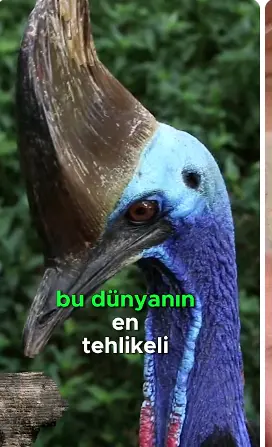These Animals Are Doomed by Their Own Horns
Improper horn growth endangers animals’ lives. Domesticated animals can undergo trimming procedures, but wild animals often face irreversible, life-threatening consequences.
- These Animals Are Doomed by Their Own Horns
- Horns: A Defense Mechanism in the Animal Kingdom
- The Role of Horns in Domesticated Animals
- Causes of Horn Deformities
- Hormonal Imbalances
- Genetic Abnormalities
- Aging and Physical Trauma
- The Danger of Horns to Their Owners
- Solutions for Domesticated Animals: Trimming and Removal
- The Perils for Wild Animals
- The Double-Edged Nature of Horns
Horns play a crucial role in the animal kingdom. These natural appendages often serve as a means of defense, a display of strength, or a vital tool in social hierarchies. However, there are times when these same horns can pose a significant danger to their owners. In this article, we’ll explore the impact of horns on animals, the causes of deformities, and how these situations are managed.
Horns: A Defense Mechanism in the Animal Kingdom
Horns have evolved as an essential tool for many animal species, typically used for protection or combat. For animals like cattle, goats, sheep, and other wild species, horns are a critical defense against predators or rivals. They are also vital in social behaviors and establishing dominance within a group.
The Role of Horns in Domesticated Animals
In domesticated animals, horns may be smaller and more manageable, but they still play a significant role in communication and defense. Farm animals often use their horns for self-defense, but improper growth or deformities can make them hazardous.
Causes of Horn Deformities
The primary reason horns become dangerous is due to deformities. Normally, horns grow symmetrically and in alignment with an animal’s head, but under certain conditions, they may grow abnormally, leading to serious risks for the animal. Here are some common causes of horn deformities:
Hormonal Imbalances
Abnormal horn growth is often linked to hormonal imbalances. Hormones regulate an animal’s physical development, including the size and direction of horn growth. Imbalances can lead to excessive growth or misaligned horns.
Genetic Abnormalities
Genetics play a significant role in determining the size and shape of an animal’s horns. Certain genetic conditions can cause malformed horns, leading to potentially dangerous situations where the horns curve inward.
Aging and Physical Trauma
As animals age, their horns may grow unchecked and take on irregular shapes. Injuries or infections can also impact the direction and structure of horn growth, causing further complications.
The Danger of Horns to Their Owners
Horns that grow improperly can become life-threatening to the animals themselves. In severe cases, the horns may curve inward, pressing against the skull or penetrating the animal’s head. This condition can cause immense pain and, if left untreated, fatal injuries.
Solutions for Domesticated Animals: Trimming and Removal
For domesticated animals, veterinary intervention can prevent or resolve horn-related risks. Horn trimming, using tools like electric saws or specialized horn-cutting wires, is a common practice to ensure the animal’s safety. However, these procedures require expertise and care to avoid unnecessary stress or injury.
The Perils for Wild Animals
Wild animals, unfortunately, don’t have the luxury of intervention. When a wild animal develops deformed horns, there is little they can do to address the issue. Over time, the horns may grow inward and eventually lead to a painful death. This tragic scenario highlights the stark challenges faced by wildlife in dealing with physical deformities.
The Double-Edged Nature of Horns
Horns are a remarkable evolutionary feature, providing animals with tools for survival and social interaction. However, when affected by hormonal imbalances, genetic abnormalities, or aging, these same horns can become a deadly burden. While domesticated animals have access to medical solutions, wild animals often face fatal consequences. Ensuring the healthy growth of horns is critical for protecting the well-being of animals.



